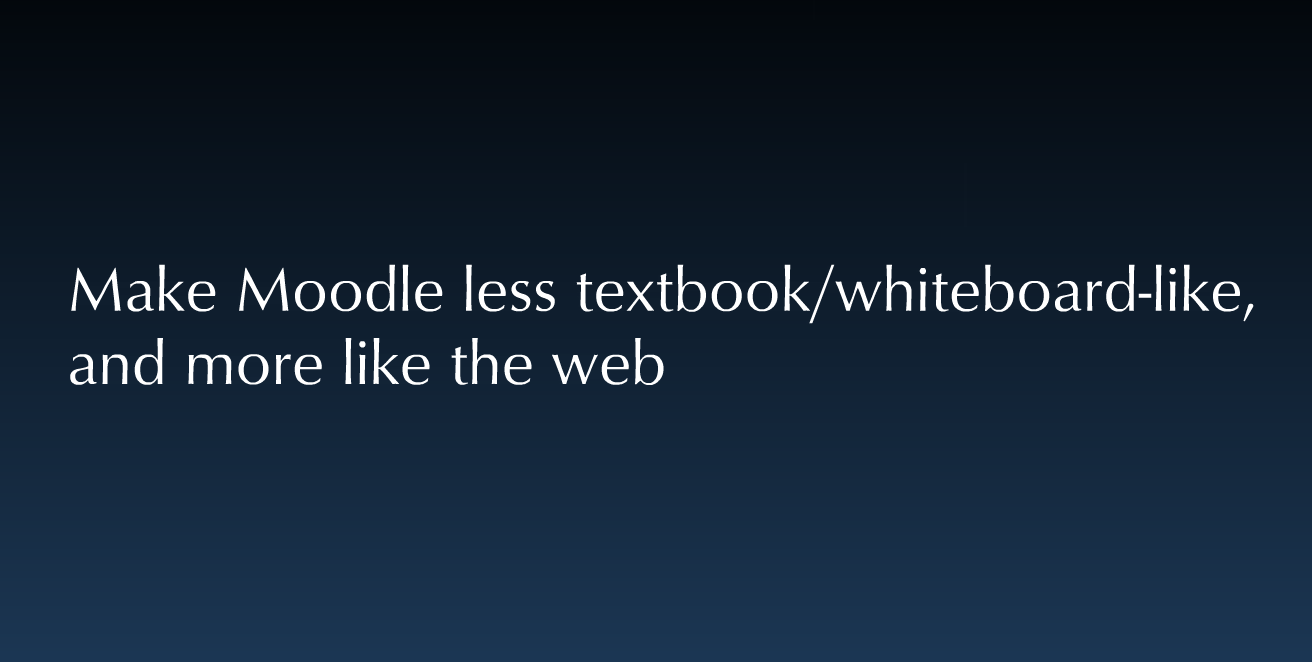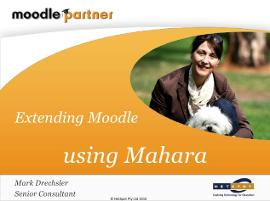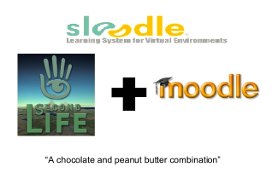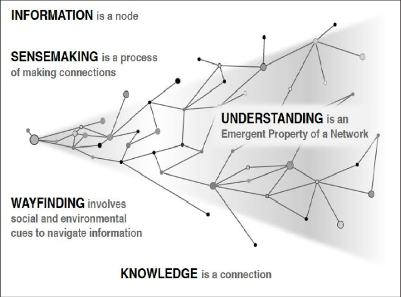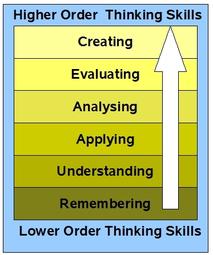Instilling Social Networking Skills
Basically, when it comes to social media and K-12 education, LMSs could provide a “walled garden” for younger students (preventing predators and spam) yet allow secondary teachers to instructively link to certain social sites outside the LMS (Fig. 2). With such incremental access to public collaboration, students could develop their online etiquette in a safe and monitored school-wide LMS. With this purpose in mind, educators, through their LMS, would be modeling approaches to learning; mentoring students in how to make connections to online resources; and revealing a reflective approach to deciphering the wide array of possibilities the Internet holds.
Ultimately for both educators and parents, LMSs could reconcile the need to establish and develop the basics with the obligation of instilling the web smarts that kids need to thrive in the social networking world they navigate through every day. It is important for adults to understand how LMSs could provide students with the safety, love/belonging, esteem, and self-actualization of Mazlow’s hierarchy of needs so that they become more aware, confident, and self-assured in their interactions on the Internet at large.
Connecting Beyond the LMS
What is interesting about LMSs is that they are often criticized for what makes them so appealing: their ability to be simple, consistent and structured. While such criticisms may appropriately target tertiary or higher education, for K-12 schools the integration of an LMS is already a big step forward for many learners, educators, and parents. With the 21st century mandate, it has now become a political requirement that students be given the opportunity to participate in, and become familiar with, the interactive and collaborative New Internet Usage tools so that, as adults, they can “compete in a global economy that demands innovation.” (Partners, 2011) Will the limitations of LMSs allow for such opportunities?
The immediate response by LMSs is to adapt. For example, many schools are now employing the open source Mahara web application in conjunction with their Moodle. Mahara extends Moodle with ePortfolios as well as social networking. By offering a personal learning environment (PLE), the partnership of Mahara and Moodle is approaching the 21st century goal of personalized learning. Another interesting pairing is a mashup of Moodle and Second Life into a multi-user virtual environment (MUVE) called Sloodle. Here, developers are tapping into the gaming disposition most associated with the Net Generation. Becker & Wade assert that gamers exhibit the characteristics necessary for the 21st century workplace (as cited in Spires, 2008): “Gamers are able to rapidly analyze new situations, interact with characters they don’t really know, solve problems quickly and independently, think strategically in a chaotic world, and collaborate effectively in teams.” One only has to witness an adolescent playing World of War Craft or Minecraft to see the potential of plugging in elements of gaming into educational tools.
Yet, it is important to understand that technological innovations in education should be more than engaging for learners. Students need to construct and reflect, they need to find their way through all the information they can now access, and they need to make sense of what that access provides and what that information is telling them. Students need to build up the personal tools that support their independent and collaborative work processes. New Internet Usage allows learners, rather than the school, to be at the centre of the learning experience. “Learners will be instrumental in determining the content of the learning, in addition to deciding the nature and levels of communication, and who can participate.” (Kop & Hill, 2008) In this regard, LMSs cannot empower students. Providing content is not enough, according to Lehmann (2009): “Schools must create ways for students to come together as a community to ask powerful questions and dare them to bring all of their talents to bear on real-world problems.” With powerful social networking tools (Vid. 2), students create their own network and connections in order to construct their own knowledge and reinforce the metacognitive skills that make lifelong learning possible. (Fig. 3)
These objectives may be ideal for the highly motivated and independent learner, but they are certainly not beyond empowering the average or uninterested. The 21st century mandate aims for personalized learning for all students: “Instruction should more consistently focus on the skills required to find and use relevant content rather than on the delivery of pre-determined content” and “Students must play a greater role in discovering their own content so the measurement of success will be related to how they find, use, and develop accurate, relevant content.” (Premier’s, 2010) As LMSs, PLEs and Open Learning Systems become more aligned with social networking and New Internet Usage tools, K-12 students will have more control over not just how and what to learn, but where to learn as well (Bessenyei, 2008).
Video 2.
What is Connectivism?
Simply put, Connectivism is Social Constructivism centred around technology. Yet, it's much more than that.
Connectivism is a learning process that revolves around knowledge that is constantly changing since everyone who has networked to that point, contributes and redefines what that knowledge consists of. (Fig. 4) To find our way through the network, we need to make sense of where the connections take us.
Just imagine the process it takes to troll the Internet exploring a topic, website to website, transported through one hyperlink after another. Eventually, you come to understand the target of your content quest through all the connections that you have made and passed through.
Now apply that quest to social networking and New Internet Usage (Web 2.0) tools, where you can create your own study groups; red flag sources; and spur on discussions and debates, all in the pursuit of making sense of the knowledge that you are seeking. (Vid. 2)
